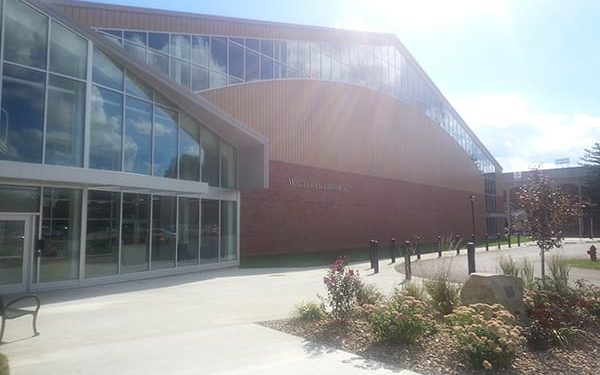Local community use of a campus recreation facility has its pros and cons. Rec centers from both sides weigh in.
In 2010, the Ping Recreation Center at Ohio University opened its doors to the local Athens, Ohio community.
Allowing local community use — meaning those other than students, faculty and staff — of the facility has been a lucrative undertaking:
- In 2014 the Ping Center made $38,000 from its 304 non-student members, according to Mark Ferguson, the executive director of Campus Recreation.
Since the Ping Center was built from student dollars, when it opened in 1996 it was for students only. Megan Wain, the assistant director of Campus Recreation at the Walter Fieldhouse and Ping Recreation Center, said they first opened it to alumni, then for local community use.
EXTRA CREDIT: Moraine Valley Community College has also benefited by opening up to over 4,000 community members.
Before either stage, however, Wain said they conducted internal surveys, asking students if they would be comfortable exercising next to their professors or Athens residents.
“It was kind of just a seamless transition. Students accepted them. Our alumni, first coming in, were fine,” said Wain. “I think students were very excited when the alumni started coming in and the alumni were excited as well, because they got that relationship with students again. And then, community members coming in, I feel like it was just commitment for everybody to intermingle.”
Wain explained they had requests from the community to join the rec center for a while, and this opportunity allowed the university to build a relationship with Athens residents.
Not Allowing Local Community Use
In contrast, the Student Fitness Center at Illinois State University is open to:
- Students
- Faculty and staff
- Spouses or partners
- Alumni
- NOT the outside community
Michael Bastian, the associate director of Campus Recreation, stated it’s what the students wrote in a referendum to the facility’s Certification of Participation.
“The name of our building is the Student Fitness Center, and I think that it shows focus and value on the students of Illinois State University,” said Bastian. “For us to have it open to community members would dilute our mission and our values of what we set forth to our students somewhat.”
EXTRA CREDIT: Northern Arizona University changed the way faculty and staff pay their recreation membership. Check it out.
Bastian also stated community members are accustomed the private health club setting that can cater to their specific needs.
“They have a different set of needs and expectations,” he said. “More often than not, they are usually the loudest voice when it comes to complaints and concerns, although they’re in the minority.”
And Bastian said they have no plans of changing their referendum to open their student recreation facility to the public.
A Look at the Revenue and Opportunities
The price of membership at Ohio University Ping Recreation Center is broken up into tiers:
- It starts at the lowest for students, who have free memberships.
- It increases 25% to 30% between faculty and staff.
- It’s at the highest for local community use.
With the extra money coming in from outside memberships, Wain said they are using it to increase the number of Athens community kids who can attend their annual summer camp. It also allows the facility to send students and graduate assistants to national conferences and certification seminars.
“We were very proud of our summer camp and bringing in more kids and being able to get more community members involved with that was awesome,” said Wain. “And we’re getting a lot more students interested going to conferences and getting certifications. Being able to do more of that kind of stuff is where our heart lies and now we’re actually able to do it, so it’s been good.”
She explained that they have not had any issues regarding crowding at the rec center or anyone waiting on equipment, but parking is difficult to the community members. They either have to wait until 5 p.m. to park for free on campus or buy a campus parking pass.
One Big Pro of Local Community Use
Ohio University has a total of six recreation centers and plan to open each of its centers to local community use.
“The pros are definitely that connection, even with the students and alumni community,” added Wain. “Just having them in our building and getting to know them. I’m sure the alumni love coming back and seeing the new additions we bring and just being able to talk to the students now and seeing how classes are going.”










